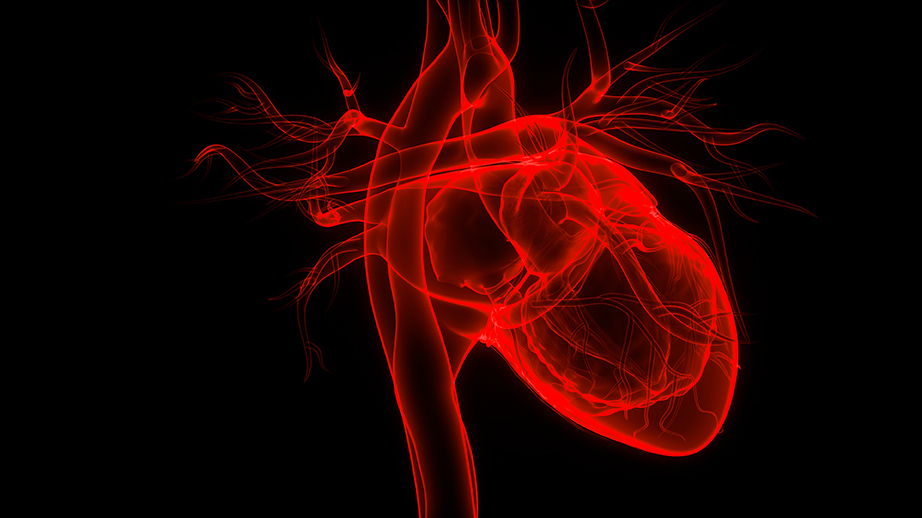
Endovascular Neuromodulation: Safety Profile and Future Directions
www.ncbi.nlm.nih.gov
April 24, 2024, 4:04 a.m.
The intracranial venous system represents a promising conduit for neuromodulation devices. The ideal endovascular neuromodulation device would have low thrombogenicity, high biocompatibility without compromising durability, and carry a low infection risk. To achieve this goal, there are several areas in which further research is necessary.
Share on

Cardiovascular neuromodulation: mechanisms and therapies
www.frontiersin.org
April 24, 2024, 4 a.m.
Cardiovascular neuromodulation is an emerging field with ongoing research and clinical trials to investigate its safety and efficacy in various cardiovascular conditions. It has the potential to offer new treatment options for patients with cardiovascular conditions that fail to respond to the traditional therapies. However, further research is needed to fully understand its mechanisms of action and long-term outcomes.
Share on

A wireless millimetric magnetoelectric implant for the endovascular stimulation of peripheral nerves
www.nature.com
April 24, 2024, 3:58 a.m.
Implantable bioelectronic devices for the simulation of peripheral nerves could be used to treat disorders that are resistant to traditional pharmacological therapies. However, for many nerve targets, this requires invasive surgeries and the implantation of bulky devices (about a few centimetres in at least one dimension). Here we report the design and in vivo proof-of-concept testing of an endovascular wireless and battery-free millimetric implant for the stimulation of specific peripheral nerves that are difficult to reach via traditional surgeries. The device can be delivered through a percutaneous catheter and leverages magnetoelectric materials to receive data and power through tissue via a digitally programmable 1 mm × 0.8 mm system-on-a-chip.
Share on

Neuromodulation in Heart Failure: Proven and Emerging Solutions
citoday.com
April 24, 2024, 3:54 a.m.
HF hospitalization rates and symptom burdens remain high in patients with HF. In addition to drug therapy, several interventional procedures for neuromodulation have been increasingly investigated in patients with HF. This article summarizes the pathophysiologic rationale and latest clinical evidence for interventional neuromodulating therapies investigated in HF, including catheter-based renal sympathetic denervation (RDN), unilateral electrical baroreflex activation therapy (BAT), and endovascular BAT
Share on

Neuromodulation Therapies in Heart Failure
www.jscai.org
April 24, 2024, 3:51 a.m.
Autonomic modulation has been proposed as a potential therapeutic strategy aimed at reduction of systemic inflammation. Such therapies, complementary to drug and device-based therapies may lead to improved patient outcomes and reduce disease burden. Most professional societies currently do not provide a clear recommendation on the use of neuromodulation techniques in HF. These include direct and indirect vagal nerve stimulation, spinal cord stimulation, baroreflex activation therapy, carotid sinus stimulation, aortic arch stimulation, splanchnic nerve modulation, cardiopulmonary nerve stimulation, and renal sympathetic nerve denervation. In this review, we provide a comprehensive overview of neuromodulation in HF.
Share on

Neurotechnology Development Must Be Slow and Steady
www.medpagetoday.com
April 24, 2024, 2:51 a.m.
Deployed in the correct manner, future BCIs have the potential to enable their users to control computers with their thoughts after loss of function. This could be life-changing for millions of patients with conditions such as locked-in syndrome, amyotrophic lateral sclerosis (ALS), or tetraplegia. Clinical research and testing of devices for various conditionsopens in a new tab or window is ongoing, and several companiesopens in a new tab or window have made significant stridesopens in a new tab or window to bring these devicesopens in a new tab or window toward commercialization and reaching patients.
Share on

You’ve heard of Neuralink. Meet the other companies developing brain-computer interfaces.
www.technologyreview.com
April 22, 2024, 11:19 a.m.
Most of the companies working in this space have the same goal: capturing enough information from the brain to decipher the user’s intention. The idea is to aid communication for people who can’t easily move or speak, either by helping them navigate a computer cursor or by actually translating their brain activity into speech or text.
Share on

BrainTiger unveils seven major scientific achievements spanning academic, clinical and commercialization
mp.weixin.qq.com
April 18, 2024, 5:25 a.m.
Throughout the brain-computer interface industry, from the birth of the BCI prototype in 1924 to the first implantation of electrodes in a monkey's brain by American scientist Eberhard Fetz in 1969, forming a closed-loop neuromodulation. After the theoretical germination, conceptual demonstration, until 2015, from the California Polytechnic neuroscientist Richard Andersen successfully implanted a chip in the brain of a quadriplegic patient, so that he had a mouthful of cold beer, brain-computer technology finally had a major breakthrough. 2021 Musk's Neuralink successfully utilized the 1024-channel flexible electrodes to achieve the monkey to play the game , 2022 Nature publishes data indicating that humans can achieve 99% accuracy by typing with their minds. The global brain-computer interface technology has already advanced to the industrial development period.
Share on

The potential of closed-loop endovascular neurostimulation as a viable therapeutic approach for drug-resistant epilepsy: A critical review
www.x-mol.net
April 14, 2024, 11:11 a.m.
Deep cerebral targets can also be accessed with an endovascular approach, with the 1.9 ± 0.5 mm diameter internal cerebral vein and 1.2-mm-diameter thalamostriate vein lying in close proximity to the anterior and centromedian nuclei of the thalamus, respectively. This work identified numerous veins that are in close proximity to conventional stimulation targets that are of a diameter large enough for delivery and deployment of an endovascular electrode array, supporting future work to assess clinical efficacy and chronic safety of an endovascular approach to deliver therapeutic neurostimulation.
Share on

Transient Neurovascular Interface for Minimally Invasive Neural Recording and Stimulation
onlinelibrary.wiley.com
April 14, 2024, 11:07 a.m.
The device is compatible with standard endovascular catheters and, once deployed, provide good apposition to a cylindrical structure mimicking a blood vessel. The advantage of this device is twofold. On the one hand, the exploitation of the cerebrovascular system as an access route to the neural tissue avoids invasive surgeries. On the other hand, a transient device may reduce the inflammatory reaction and avoid additional surgeries for removal or replacement. This neurovascular interface combines the benefits of both transient bioelectronics and stent technology in a single device to broaden the range of applications of neural interfaces from neurological diseases and mental disorders to bioelectronics medicine.
Share on

Neurostimulation Devices for the Treatment of Neurologic Disorders
www.mayoclinicproceedings.org
April 14, 2024, 10:47 a.m.
Electrical stimulation technologies are evolving after remaining fairly stagnant for the past 30 years, moving toward potential closed-loop therapeutic control systems with the ability to deliver stimulation with higher spatial resolution to provide continuous customized neuromodulation for optimal clinical outcomes. Even so, there is still much to be learned about disease pathogenesis of these neurodegenerative and psychiatric disorders and the latent mechanisms of neurostimulation that provide therapeutic relief.
Share on

Making a case for endovascular approaches for neural recording and stimulation
iopscience.iop.org
April 14, 2024, 10:44 a.m.
Several types of endovascular electrodes have been developed to be delivered into the blood vessels in the brain via a standard catheterization procedure. In this review, the existing body of research on the development and application of endovascular electrodes is presented. The capabilities of each of these endovascular electrodes is compared to commonly used direct-contact electrodes to demonstrate the relative efficacy of the devices. Potential clinical applications of endovascular recording and stimulation and the advantages of endovascular versus direct-contact approaches are presented.
Share on

Novel Neuromodulation Techniques
www.embs.org
April 14, 2024, 10:27 a.m.
Neuromodulation techniques using magnetic fields and electrical stimulus date back to before the 19th century. Presently, neuromodulation is achieved with various modes of physical stimulation including magnetic, electrical, acoustic, optical, and even thermal stimulation to neural systems. These techniques have been used in clinical treatment for mental disorders (e.g., depression) and movement disorders (e.g., Parkinson’s disease).
Share on

La course aux implants cérébraux démarre !
trends.levif.be
April 14, 2024, 9:36 a.m.
Elon Musk, à travers Neuralink, n’est pas le seul à vouloir implanter des puces dans des cerveaux humains. À côté de la communauté scientifique et médicale, d’autres grands noms de la tech comme Bill Gates ou Jeff Bezos s’invitent dans la course, avec de nouvelles avancées, notamment pour Synchron, l’un des concurrents de Neuralink.
Share on

Synchron launches patient registry for Stentrode brain-computer interface
neuronewsinternational.com
April 14, 2024, 9:34 a.m.
Synchron’s BCI technology—primarily seen in the company’s Stentrode device—is designed to decipher the neural code of the brain and find new ways to restore motor intent to control digital devices. The Synchron BCI represents a novel approach to restoring functionality in patients with limited mobility, according to a company press release. By leveraging an individual’s blood vessels, the device is implanted in the brain without the need for invasive brain surgery.
Share on

Synchron Begins Planning Brain Chip Human Trials
www.extremetech.com
April 14, 2024, 9:32 a.m.
BCI chips could be life-changing for patients with all manner of mobility disabilities, but Synchron's first major test will focus on people who are paralyzed due to ALS (amyotrophic lateral sclerosis), stroke, or multiple sclerosis. Synchron uses an implantation technique that it claims is less invasive than competing methods. The chip is delivered to the brain via the jugular vein. This endovascular surgery is easier and safer to perform compared to the open brain surgery required for Neuralink. After being connected to the brain's motor cortex, the Synchron BCI can read and wirelessly transmit commands to move a computer cursor.
Share on

Doctors Raise Concerns About The Health Of Neuralink’s First Patient
twistedsifter.com
April 14, 2024, 9:30 a.m.
The medical field has concerns – and rightfully so – about the lack of information surrounding their policy, practices, and details about the chip. They say there’s no way to know whether the procedure is safe, or to assess for themselves that the patient is healthy and thriving.
Share on

Forget Neuralink: This less invasive brain implant company is recruiting trial participants
www.zdnet.com
April 14, 2024, 9:29 a.m.
In a release on Monday, the company announced a new registry to recruit participants before its next phase of clinical trials. Synchron initially received FDA approval for human testing in July 2021, and as of last year, has implanted its device in six US patients. Before being greenlit for US testing, Synchron had been tested in four Australian patients. By contrast, Neuralink only received testing approval in May 2023, and has been tested in one patient.
Share on

Starfish Neuroscience es el nuevo chip cerebral del fundador de Steam: Neuralink y Elon Musk tiemblan
www.fayerwayer.com
April 14, 2024, 9:28 a.m.
Gabe Newell, el fundador y CEO de Steam y Valve abre la billetera para fundar Starfish Neuroscience. Otro competidor para Neuralink y Elon Musk.
Share on

Brain-Computer Interface: 5 Applications It Can Be Used For
www.itechpost.com
April 14, 2024, 9:26 a.m.
The tech industry has been paying so much attention to AI that the world is not giving much attention to brain-computer interface advancements. In truth, this kind of technology has so many applications, a lot of which can improve the quality of life for the impaired.
Share on